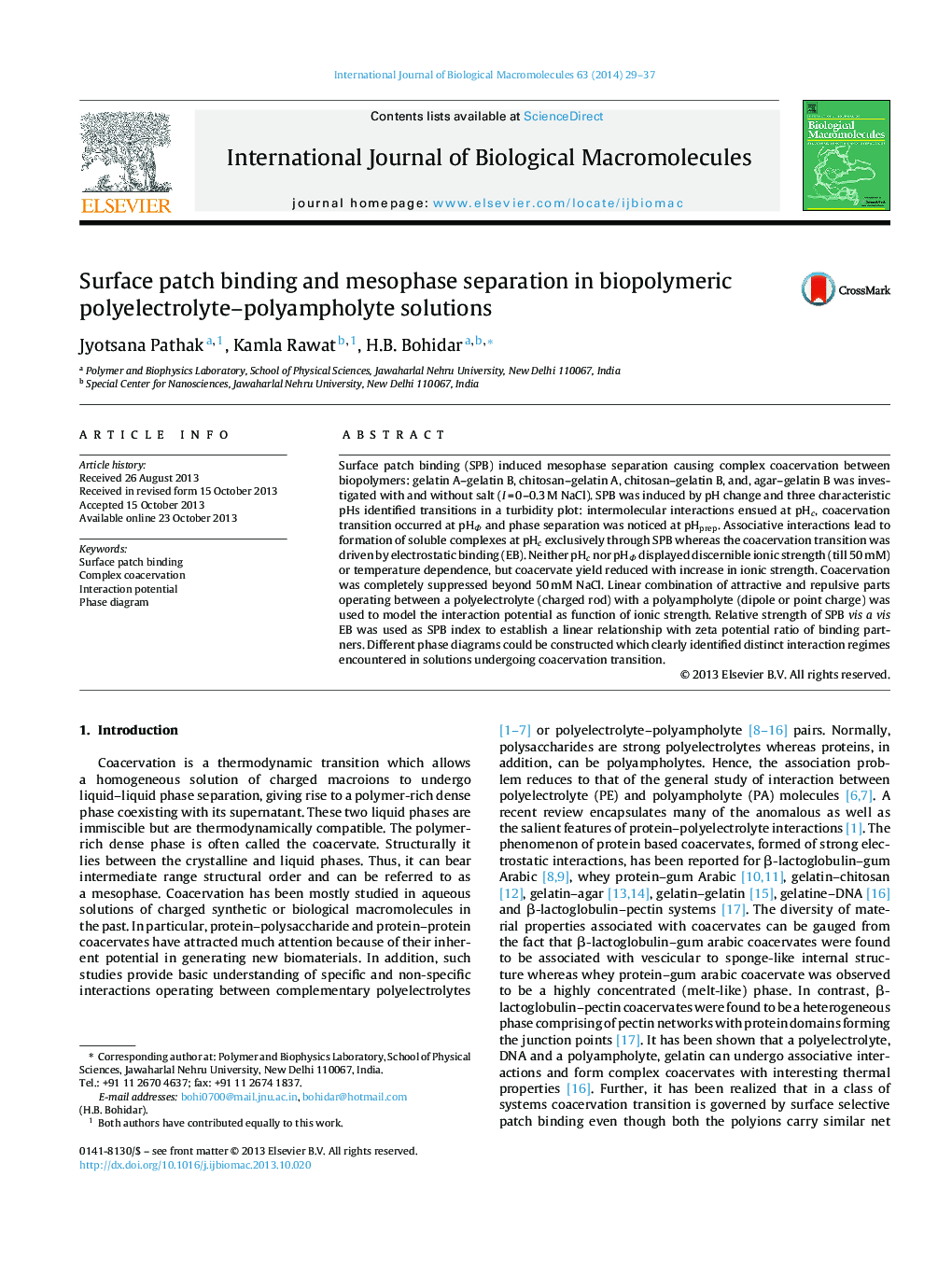| Article ID | Journal | Published Year | Pages | File Type |
|---|---|---|---|---|
| 1986978 | International Journal of Biological Macromolecules | 2014 | 9 Pages |
Surface patch binding (SPB) induced mesophase separation causing complex coacervation between biopolymers: gelatin A–gelatin B, chitosan–gelatin A, chitosan–gelatin B, and, agar–gelatin B was investigated with and without salt (I = 0–0.3 M NaCl). SPB was induced by pH change and three characteristic pHs identified transitions in a turbidity plot: intermolecular interactions ensued at pHc, coacervation transition occurred at pHΦ and phase separation was noticed at pHprep. Associative interactions lead to formation of soluble complexes at pHc exclusively through SPB whereas the coacervation transition was driven by electrostatic binding (EB). Neither pHc nor pHΦ displayed discernible ionic strength (till 50 mM) or temperature dependence, but coacervate yield reduced with increase in ionic strength. Coacervation was completely suppressed beyond 50 mM NaCl. Linear combination of attractive and repulsive parts operating between a polyelectrolyte (charged rod) with a polyampholyte (dipole or point charge) was used to model the interaction potential as function of ionic strength. Relative strength of SPB vis a vis EB was used as SPB index to establish a linear relationship with zeta potential ratio of binding partners. Different phase diagrams could be constructed which clearly identified distinct interaction regimes encountered in solutions undergoing coacervation transition.
